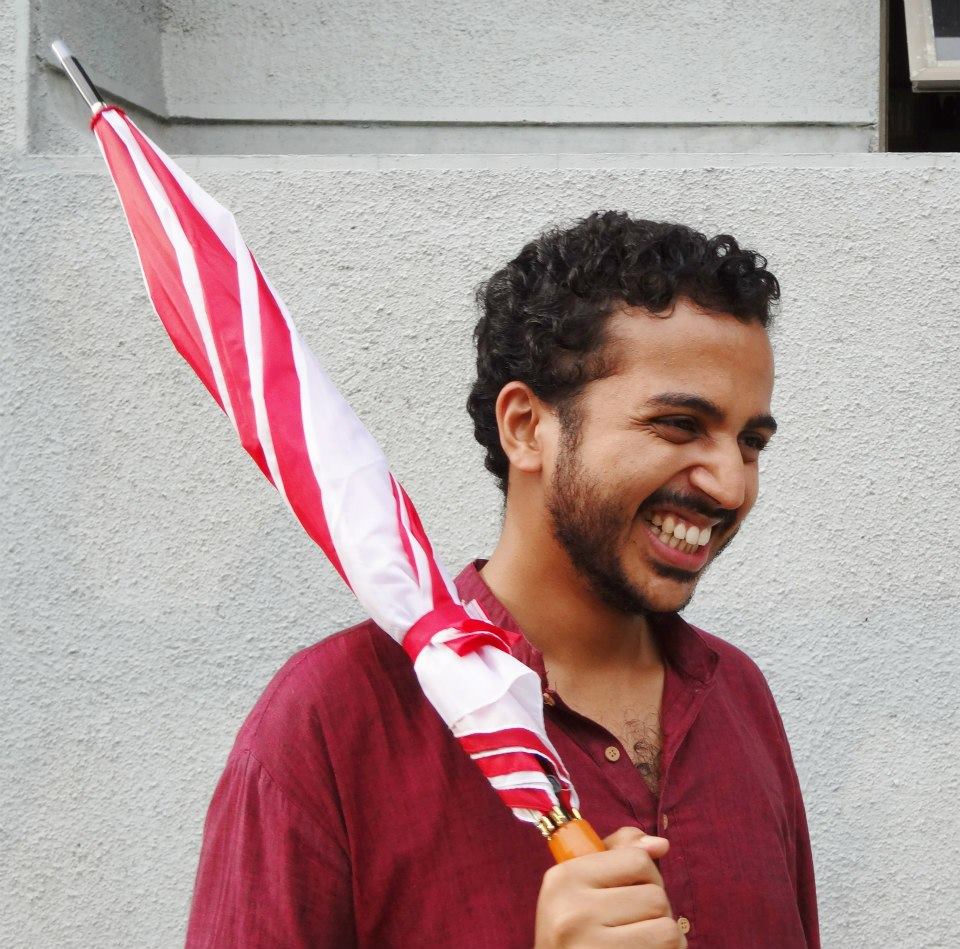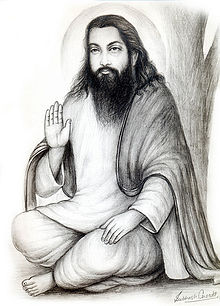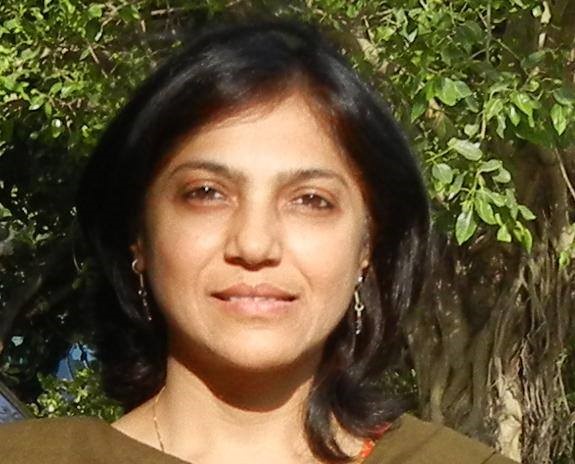Dr B. Ravichandran
In Sandaiyur village of Madurai District, Chakkiliyars, one of the Scheduled Castes in Tamil Nadu are protesting for the 13th day since 30th January against an untouchability wall. They are demanding demolition of the wall. In protest. 70 families have left their houses and are staying under a banyan tree at the foothills of Thenmalaiyaandi. As the villagers are in protest, their normal life has been affected. Schools students are missing school, men and women are not going to work, the makeshift shelter lacks drinking water and sanitation facilities. Many have fallen sick and a lady was recently stung by a scorpion. The protesting villagers refuse to re-enter the village until the wall is demolished.
{youtube}OFInpJORRzM{/youtube}
Sandaiyur village consists of different castes such as devan (OBC), pillaimar (OBC), setiyan (OBC), aasari (OBC), barber (OBC), washermen (OBC), devendrars (SC), paraiyar (SC), Arundhathiyars (SC). OBCs live together and SC’s are given space to live away from OBCs. Devendrars’ houses were away from the area, while Arundhathiyars and Paraiyars lived together until the wall was erected.
Paraiyars and Arundhathiyars in the village did different jobs in the past. Both reared pigs and ate dead cow meat. There were days when Paraiyars borrowed meat and rice from Arundhathiyars. Paraiyars’ caste occupation in the village was knitting while Arundhathiyars’ was to bury dead bodies and remove dead cows. Both of them worked as agricultural labourers in the fields of OBCs. Now, many of the Arundhathiyars migrate to nearby states to work, due to lack of agricultural work in the village.
Between Paraiyar and Arundhathiyar houses, there is an empty space of about 50 cents used by both the castes for a long time. A few years ago Paraiyars built a fence over this land restricting Arundhathiyars from using this space. 40 houses of Arundhathiyars are in one place and 20 houses of Arundhathiyars are in another place nearby. The empty space was the only short route to access both sets of houses. It is also the space used to access shops, to gather, a small space to play etc. When Arundhathiyars asked Paraiyars the logic in building the fence, they argued that it is the land of Paraiyars. The village elders complained to the Village Officer about the fence and the restrictions against them. During this period, the villagers unearthed the fact that the empty land is actually a common land allotted to both the castes. Arundhathiyars also found that the land they were living on was actually provided by Kamarajar when he was the CM of Tamil Nadu. The government had then allotted 1 acre and 60 cents to Arundhathiyars and Paraiyars. In that, 1.10 acres were issued with individual pattas and 50 cents were provided for common purposes usage for Aathi Dravidars (a common terminology for all untouchable castes) to both the castes. He gave 14 pattas to different families of Hindu Arundhathiyars and 7 pattas to different Hindu Paraiyar families. Now the contention is about the 50 cent land.
With this information, Arundhathiayrs requested the local Tahsildar and Village Officer to take necessary action to remove the fence. As none of them did anything, they met the Collector on 30th April 2012. Then, the Collector Mr. Sakayam instructed to remove the wall on 2nd May 2012 which segregates and restricts access to one particular caste. After removing the wall the Revenue Development Officer calls for a meeting to bring a peace pact between two castes. In that meeting when RDO asks what do you want, Paraiyars argue they need a temple and a compound wall. The RDO warned and concluded with 5 points, which say not to build a compound wall, and any activities on this land have to be taken up with permission from RDO. In May 2015, Paraiyars prepared a note on a 10-rupee Judicial document stating that Arundhathiyars agreed to use the 11 feet space as a footpath for Arundhathiyars while Paraiyars built a fence around the Rajakaliamman temple in the village. (This is one of the documents produced by Paraiyars in their defence arguing the wall was built with Arundhathiyars’ permission. This document was signed on 11th May 2015 in T.Kallupatti town in front of Jameen Venkatesh, a feudal landowning person who was invited by Paraiyars to get Arundhathiyars’ signatures to built the fence.. If the land was Paraiyars’ then why did the Paraiyars in the village seek Arundhathiyars’ approval? When Paraiyars could build a wall claiming it is their land initially, then why are they showing the document with Arundhathiayrs’ signature? Even now it is Arundhathiayars who are protesting in the village, while Paraiyars are not. So they are not equal and it cannot be considered that the document was signed without any pressure.)
After the signatures were got from Arundhathiyars, Paraiyars started building a brick wall. Again Arundhathiyars complained to the RDO, VO, and Tahsildar. However, when Arundhathiar villagers ask Paraiyars the continuous reason for building the fence, they say “You are Chakkiliyar who eat beef. Don’t enter the temple area. You bury the dead and should not wear slippers on this land. We are Paraayyar” (5:00-6:00) (https://www.youtube.com/watch?v=OFInpJORRzM&t=2s)
Then the villagers approached the court in August 2017 and the court delivers its judgement on 21:08:2017, in the court of Tahsildar of Peraiyur Taluk that “an order has been passed under Section 6 of the Tamil Nadu Land Encroachment Act and the enforcement of the said order is under process and that such enforcement is being opposed by Hindu Paraiyar community.” The court gave 4 months time ending on January 19th, 2018 to execute the order. Again the Tahsildar and VO did not act until the Paraiyars got a stay order to stop the demolition. (This is the most important document cited as defence arguing that it is not an untouchability wall because neither the party nor the judge has referred anywhere to the wall as a sign of untouchability. This is misleading because the wall fills every criterion to be called an untouchability wall, the court cannot say it’s untouchability because it doesn’t believe there exists untouchability within SCs. If it believes then Arundhathiyars can file a case under SC/ST Act on fellow SCs. This would mean to enact the SC/ST Act, which is not the court’s business. This argument is used by many Paraiyars to leverage their casteism and say the court has said it’s an encroachment. What other proof do they want to agree it’s caste. Walls built either as compound boundaries or to segregate a group of people is called untouchability walls).
The local government officials did not do anything to implement the court order. The villagers ask RDO to implement the order, they ask for time. Arundhathiyars organized protests to implement the order in various places, in front of the RDO and Collector. Gave petition to different offices. When they protested in Thaluk Office, Tahsildar asked time till 19th of January. Arundhathiyars protested on January 19th to implement the order, Tahsildar requested to wait until January 29. On 29th the officials asked for time till February 5th, on the 30th public was protesting, the Collector never bothers. On the same the day, they leave the village. The villagers get information that a stay order was issued on 1st February. On 2nd RDO comes to the villagers and says she cannot implement until the stay order is vacated.
On January 19th the deadline was crossed, so now the Arundhathiyars announced a protest on 23rd January. On 22nd the local Government official says it was served the stay order against demolition (none have seen it except Evidence Kathir; the Arundhathiyar villagers were not shown it) against the demolition of the wall! As soon as the stay order was issued, the local officials visited the village and said none should demolish. The RDO is a Paraiyar as is the DSP. Then the villagers returned their ration cards in protest and also told the district administration to demolish the wall and they would not enter the village until it is done. The Tamil Nadu Untouchable Eradication Front, a movement that has a large presence in Tamil Nadu has been involved in the protest. Arundhathiyar movement’s Aathi Thamilar Viduthalai Katchi, with its limited presence in the region, is spearheading the protest movement. Thol. Thirumavalavan’s party condemned TNUEF’s involvement and threatened to use the SC/ST Act on its leader. A poster from them condemned Arundhathiyars for protesting.
Some opinions
A Paraiyar from the village told Junior Vikatan 04th February 2018, a Tamil weekly, that Chakkiliyars tie their cows on the common land. The person also said that Chhakkiliyars walk wearing slippers in their area. Until now, one did not know that Chaikkiliyar cows are also untouchables. Most caste Hindus across the country force Dalits not to wear slippers.
{youtube}egHBNLZsnpM{/youtube}
Evidence Kathir argues, “it is not an untouchability wall. There is some problem between both the groups.” Like caste Hindus, Kathir doesn’t even want to acknowledge that it is a difference between two castes. When he says “differences between two groups”, it also means that both are of equal standing. Actually, Paraiyars have been enforcing rules and regulations on Chakkiliyars in the village. If they were both equal, then Chakkiliyars would not have left their houses.
Socialist Justice Party leader Arumugan argues that it is a compound wall and asks: “Where is the untouchability in this?”. There is ego between both. The compound wall is built not across houses but to segregate two castes. What is the necessity to segregate Arundhathiyars, if not for caste(ism)?
Pa. Ranjith tweeted: “Will the problem in Sandaiyur be solved? But when will we break the inequality between us. ..” The problem with this statement is he does not even mention the caste of Paraiyars who have been harassing Arundhathiyars in the village.
{youtube}Qo6DmmcKpqc{/youtube}
When people met Thol.Thirumavalavan for an interview in Chennai on the 12th day of the protest, he said he is not aware of any protest by Arundhathiyars.
There are hardly any villages in Tamil Nadu where Paraiyars treat Arundhathiyars equally. There has been continuous violence against Arundhathiyars by Paraiyars across Tamil Nadu. Inter-caste marriages, especially when an Arundhathiyar marries a Paraiyar woman incites violence. Sadly most of the anti-caste writings are also written by Paraiyars, who hardly speak of the violence their caste perpetrates on Arundhathiyars.
Writers like Ayodhidasar, Ravikumar, Evidence Kathir always referred to Arundhathiyars with negative connotations. It also a problem that Dalit writers and activists across the country see the differences between Scheduled Castes through the government’s eye. For its development projects, the government has combined all untouchable castes into a single category. As a result, most of its policies are aimed at one homogeneous identity of SCs. This leads to many other problems. Like the dalit movement started seeing Dalits as one family, caste hindus see all Dalits as Dalits. Dalit movement leaders who are mostly the first generation literates and occupy government posts, politics and academics have started using the Government’s logic of Dalits as one family to defend their posts and positions.
The second problem is that the government only categorized castes that are untouchables, but it hardly saw those who also exhibit the same domination of the touchables, within the untouchables. Also, it always had a benchmark for comparison – which is always a non-dalit.
Most of the arguments used by Paraiyars are the same arguments used by caste Hindus and the media, which always reduces caste violence/s into group clash/es and personal enmity. In this case, though there is a wall of 6 feet that segregates Arudhathiyars it is not seen as caste wall, similar to the Nairs’ walls or other caste walls built by caste Hindus. Till date, three negotiations have taken place; in all these negations they ask Arundhathiyars to leave the protest. In all-party meeting, the members were largely from Paraiyars, though of different organizations.
In this issue, if in the place of Paraiyars there was any non-dalit then the SC/ST Act would be applicable. According to the state, SC’s cannot commit atrocities on one another because they are ‘families’ of untouchables. The villagers are questioning this very idea. The wall which is built is not the only problem but the continuous caste violence perpetrated by Paraiyars is growing and now their caste pride and arrogance stands 6 feet tall. For some this is a wall of bricks, for some its a compound, or a boundary. Interestingly both Paraiyars and Arundhathiyars say its a kotachuvar, a denotation to the wall of a fort.
It would be a surprise to many who have witnessed Pa.Ranjith, who spoke openly against the progressive members in the film industry to recognize the brutality of caste… Or Evidence Kathir, who has been in the forefront with a team of people to fight caste violence cases, or Thol. Thirumavalavan who is seen as an anti-caste fighter. As a matter of fact everything is true about them, but there is also the other side of the coin, that none of them have openly voiced when Paraiyars commit atrocities, leave alone on Arundhathiyars. They have maintained silences, and when the issues come to the public then argue they are not casteists, and say we are a family and it’s fight within (the family). A very patriarchial argument used to defend their castiesm.
Whenever these categories like SC are problematized by Madigas, Arunthathiyars, Valmikis etc, they are met with responses that say: it’s a sub-caste issue or a family issue.. These are no sub-castes. They are different castes in the Scheduled Castes category.
* Edited by Pushpa Achanta.
~
References
* Junior Vikatan: 04-02-2018
* Writ Pettion: W.P (MD)N0.15363 of 2017
* The Hindu: Wall divides Dalits in Madurai Village, 2018-02-11
* Kaattaaru YouTube Channel: Theendamai Suvar – Sandaiyur
https://www.youtube.com/watch?v=OFInpJORRzM&t=831s
* Dalit Camera YouTube channel: பறையனின் சாதி வெறி paraiyan casteism and Untouchability wall Part 1 – 2
https://www.youtube.com/watch?v=egHBNLZsnpM
* Dalit Camera YouTube channel: பறையனின் சாதி வெறி paraiyan casteism and Untouchability wall Part 2 – 2
https://www.youtube.com/watch?v=Qo6DmmcKpqc&feature=youtu.be
* Independent fact finding report by: Soya Castro, Vivek Veerasekar, Palanichamy, Manogaran and Rahul Gandhi
~~~
Dr B. Ravichandran is a founding member of Dalit Camera. Currently he works as a Social Scientist at Indian Social Institute.










